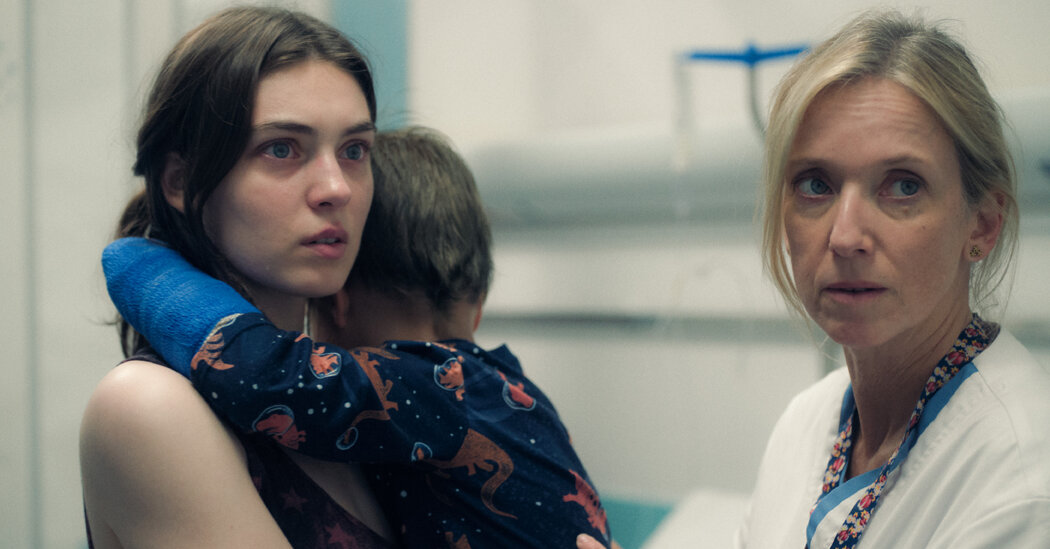Anamaria Vartolomei began her film career when she was 12 opposite Isabelle Huppert in a film about a controversial photographer and her daughter. And in the past few years, Vartolomei, now 26, has blazed through a slate so ambitious that it resembles one of Huppert’s typically prolific runs — each film different from the last.
The Romanian-born actress’s recent rise began with a heartbreaking starring role in “Happening” as a French university student in the 1960s who seeks an abortion. It won the Golden Lion for best film at the 2021 Venice Film Festival — where the director Bong Joon Ho was the head of the jury. Bong cast Vartolomei in the dystopian film “Mickey 17” as a shrewd shipmate of Robert Pattinson’s repeatedly replicated drone.
By the time “Mickey 17” came out earlier this year, she’d projected a mesmerizing mystique in the French blockbuster “The Count of Monte Cristo.” Her fearless streak was also recently on display in “Being Maria,” in which she plays the actress Maria Schneider, star of “Last Tango in Paris,” and “The Empire,” a loopy intergalactic yarn set in rural France.
Her latest movie, “Adam’s Interest,” opens the Critics’ Week showcase at the Cannes Film Festival, which runs through May 24. Vartolomei plays a mother who risks losing custody of her child after he is hospitalized. In a video interview — seated beneath a wall of pictures featuring “Breakfast at Tiffany’s,” “Breathless” and “Scarface” — she explained why the film’s raw realism appealed to her and how it was achieved. The following conversation has been edited and condensed.
In your career, you tend to choose characters who have limited power or autonomy. But they do what they can with what they have.
Yeah, I love this. It speaks to me personally, and I think it speaks to everyone in a way. I mean, freedom belongs to us, but it’s hard to admit that we have power over it. Sometimes we feel like we depend on others’ perspectives regarding our freedom. You think about pleasing others, and you forget what you really want. I like characters that know they want something, but they don’t really know how to obtain it. They finally find a way because if they find their truth, they will find peace.
What drew you to “Adam’s Interest”?
I loved the construction of the script, and I felt it was very raw and real. It was nice for me after doing “Monte Cristo” and “Mickey 17.” But I told my agent, I don’t even know how I’m going to portray this woman because I don’t have kids. I was sort of afraid of it, but I was very moved by her obsession. I asked myself during the whole shooting experience: I don’t even know who is clinging to whom — the kid to his mom or the mom to her kid.
The movie seems to fit into a French tradition of social dramas, like the Dardenne brothers. Do you have a particular appreciation for this genre?
Yeah, I do like it, because cinema to me is the expression of life, and sometimes you can make it political just when you talk about reality. I like the Dardennes, but also [the Romanian filmmaker] Cristian Mungiu. I love these movies because you go back to your life, but the movie still lives with you after seeing it.
“Adam’s Interest” is interesting for what it says about motherhood in society. Sometimes you may forget yourself because you give everything to your children. You have to heal yourself, too, in order to be a good mother. But you have to admit that you have the right to ask for help. I wanted to make her somebody that disappeared behind her child. Somebody who’s the girl next door, the mother next door.
The director, Laura Wandel, was good at getting inside the perspectives of children in “Playground.” What was it like shooting “Adam’s Interest” with her?
It’s intense, the way you follow the character, and this tension grows during the movie. You discover things as the characters discover them. Each time she opens a door, a new movie could be created, because you never know what’s behind it. It’s almost like a documentary. I felt so moved in the theater, physically. I like this physical experience for the people who will see it. And it was a very nice and interesting collaboration, together with Léa [Drucker, who also stars]. We were this trio, hand in hand.
Did you shoot in an actual hospital?
It was a functional hospital. We had an area that was dedicated to shooting, but we could hear people from other sections. That was so helpful for building the characters, because you felt right inside the subject: It felt real. Actually, I received the script two weeks before starting shooting. I just wanted to be surprised by what happens, because this woman is so vulnerable that I also wanted to be [vulnerable] and step into an unknown world.


